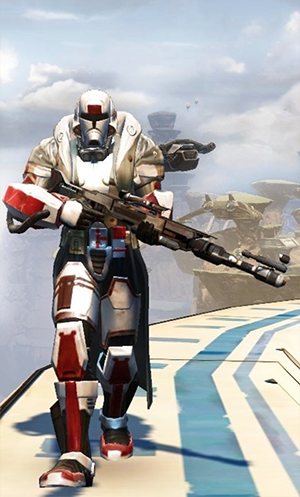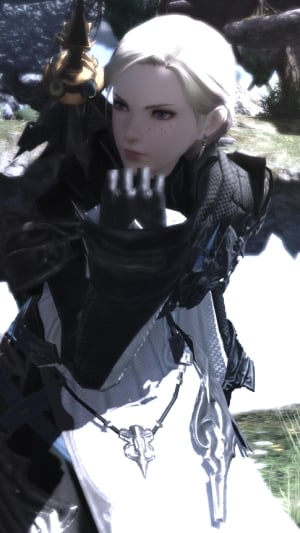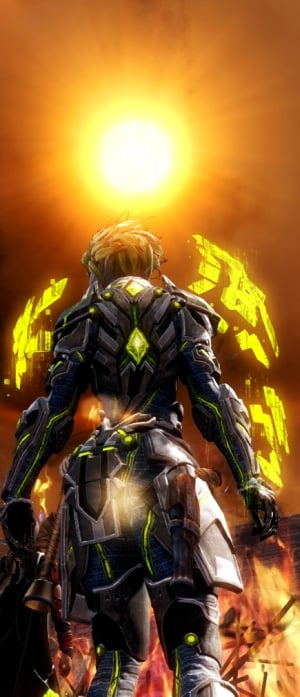
Do you like fighting games? I don’t. Let’s talk about fighting games. But bear with me because you’ll get where this is going.
While I might not personally care much about fighting games, I still wind up spending a lot of time reading about them because that’s just the sort of thing I read for fun. And balancing a fighting game is honestly pretty difficult, thus it’s something that gets talked about a lot. It’s difficult enough that there are, in fact, two different ways to do it.
This does have a lot of bearing on MMOs, though, where balance doesn’t get talked about nearly as much and tends to get talked about in rather dim tones when it is discussed. But in order to understand that you need to understand the difference in balance methods, why World of Warcraft players miss Mark of the Wild, and why balance matters in the first place.
 But let’s keep on fighting games for a moment. As I mentioned, there are two basic approaches to balance. The first is the uniform approach (which is a term I’ve just created for this article). The idea here is that you give every character the same basic toolset, albeit with some slight differences: One character might have a lunging kick while another has a roll, but they both have the same basic gap-closing moves. You then tweak damage, durability, and so forth until all of the fighters are on the same basic level.
But let’s keep on fighting games for a moment. As I mentioned, there are two basic approaches to balance. The first is the uniform approach (which is a term I’ve just created for this article). The idea here is that you give every character the same basic toolset, albeit with some slight differences: One character might have a lunging kick while another has a roll, but they both have the same basic gap-closing moves. You then tweak damage, durability, and so forth until all of the fighters are on the same basic level.
The other approach is the bonkers approach. Here, you give characters wildly different sets of tools, playstyles, and moves. You then carefully tweak damage as well as things like move speed and which move counters what, tooling through individual matches to see who suffers more or less in a given scenario and who needs extra tools to make a matchup fair.
The second one is far harder to do, obviously. It is also the one that contains nearly every fighting game anyone remembers. Street Fighter II? Definitely. Mortal Kombat? Yes. Super Smash Bros? Oh heck yes.
What’s usually brought up as an argument against this, of course, is that the result of the second balance method is the dreaded tier list, where some characters are simply better than others. But the problem is that tier lists aren’t usually used terribly well by the MMO community either, and looking at tier lists in fighting games is generally done incorrectly.
Let’s use Super Street Fighter II Turbo as an example. The tier list for that game is pretty well-known, and in that tier list Dhalsim is one of the top-tier characters while T. Hawk is near the bottom. Known facts. Except that players will also be quick to point out that T. Hawk also has an absolute unstoppable perfect throw loop he can set up wherein the opponent will just get thrown and die without any tools for getting out. Dhalsim has nothing like that. So how is he in a different tier?
The answer is that it’s all relative. Sure, T. Hawk has some pretty great tricks there… if he can get in and get the loop going. That’s hard to do, and against a good player it should be nearly impossible. Dhalsim, meanwhile, has an answer to almost every trick. He’s got very few things you can infinitely abuse, but he has tools to deal with almost anything, even though he still has matches wherein he actually is at a disadvantage.
To use an example I love bringing up in Final Fantasy XIV, people generally agree that at the moment Dark Knight is at the bottom of the tank list. This is true; however, there are three tanking jobs, and the nature of things means that one of them is always going to be on the bottom. No matter how many buffs one or the other receives, none of them can always be at the same spot unless their tools are completely equivalent.
 And if they were? There would still be tiers. Because, in this case, Paladin would be worse. Even if all three had the exact same abilities, Paladin requires two gear slots for a sword and shield, while Dark Knights and Warriors don’t.
And if they were? There would still be tiers. Because, in this case, Paladin would be worse. Even if all three had the exact same abilities, Paladin requires two gear slots for a sword and shield, while Dark Knights and Warriors don’t.
Someone always comes in last. That isn’t a failing, it isn’t a bug, it isn’t a problem. It’s the simple reality of the system. You can have a race between the dozen best runners in the world, and one of them will be first and one will be last. Run it four dozen times, and the best runner still won’t win every time.
This is why I get mad about World of Warcraft’s approach to balance, and it comes up again when we were told “oh, there’s no need for Mark of the Wild, we just rebalance things so that everyone gets that benefit.” I have no doubt that this is much easier to balance. It’s much simpler and straightforward.
It’s also totally missing the point. Part of what made people choose to play Druid over anything else was this particular sort of utility. Part of the reason why I long loved playing a Retribution Paladin was that it had these weird tools for healing and supporting the group with auras, even if it meant that my Paladin wasn’t actually hitting as hard as the Arms Warrior.
It’s a lot of work to balance that so that Retribution Paladins feel like they’re useful, fun, and still delivering that core flavor. But that is literally the point of balance.
Balance, when it comes to MMOs, isn’t about “having everyone deal about the same damage.” It’s about making sure that things are always doable, even with weird party configurations. It’s about saying “let’s say we have a group of five Druids covering all of the Druid specs; how can we make sure that this party can accomplish anything a more mixed party can?”
 The first thing that goes, any time you start going down this balance route, is the weird stuff. Any time you seek to make things easier to balance, the first thing you lose are the weird corner cases. Remember how the “shared” trees for every Star Wars: The Old Republic class existed? How Consulars and Inquisitors had a tree that made the melee spec more spell-focused and the spell-focused spec more capable in melee? How these trees were meant to be a shared link between both advanced classes?
The first thing that goes, any time you start going down this balance route, is the weird stuff. Any time you seek to make things easier to balance, the first thing you lose are the weird corner cases. Remember how the “shared” trees for every Star Wars: The Old Republic class existed? How Consulars and Inquisitors had a tree that made the melee spec more spell-focused and the spell-focused spec more capable in melee? How these trees were meant to be a shared link between both advanced classes?
Remember how that got gutted as they made the two advanced classes more distinct? It seems like more options when it’s actually fewer, more constrained.
That’s because weird stuff is hard to balance. How does a 10% boost to party damage balance against a class who can’t do that? Do you make the first class weaker all around? Does the bonus stack? Do you make everyone weaker? Do you make the bonus conditional and an option or a constant thing?
It’s much easier to balance it if everyone gets basically the same utility. And then it’s much easier to balance if everyone just gets those numbers baked in. And so you go, until everything is basically the same tricks with different flavor, at which point very minor differences determine what’s top tier because someone is still top tier because someone is always top tier.
That’s what balance is about. Making sure that even more esoteric options can still clear content and play the game, and then giving people distinct reasons to play everything. And if you think the goal is to give everyone basically the same numbers… well, go ahead and name a fighting game wherein everyone has the same basic toolsets and moves, one that’s actually remembered now instead of forgotten.
I’d say I’ll wait, but I don’t have that sort of time.
 Sometimes you know exactly what’s going on with the MMO genre, and sometimes all you have are Vague Patch Notes informing you that something, somewhere, has probably been changed. Senior Reporter Eliot Lefebvre enjoys analyzing these sorts of notes and also vague elements of the genre as a whole. The potency of this analysis may be adjusted under certain circumstances.
Sometimes you know exactly what’s going on with the MMO genre, and sometimes all you have are Vague Patch Notes informing you that something, somewhere, has probably been changed. Senior Reporter Eliot Lefebvre enjoys analyzing these sorts of notes and also vague elements of the genre as a whole. The potency of this analysis may be adjusted under certain circumstances.













